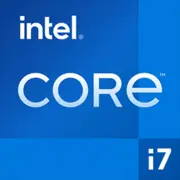Intel Core i7-6700T

Intel Core i7-6700T: Panoramica e rilevanza nel 2025
Efficienza energetica e stabilità per compiti di nicchia
Caratteristiche principali: Architettura Skylake e bilanciamento delle prestazioni
Il processore Intel Core i7-6700T, rilasciato nel 2015, rimane richiesto nel 2025 grazie alla sua unica nicchia: basso consumo energetico (TDP 35 W) mantenendo prestazioni di tutto rispetto.
Architettura e processo tecnologico:
- Skylake (14 nm): Architettura ottimizzata con IPC (Istruzioni per ciclo) migliorato rispetto alle generazioni precedenti.
- 4 core / 8 thread: Il supporto Hyper-Threading consente di elaborare in modo efficiente compiti multi-thread.
- Frequenza base 2.8 GHz / Turbo Boost fino a 3.6 GHz: Aumento dinamico della frequenza per condizioni di carico elevate.
- Grafica integrata HD Graphics 530: 24 unità di esecuzione, supporto 4K@60 Hz tramite DisplayPort.
Prestazioni:
- Geekbench 6: 1185 (single-core) / 3613 (multi-core) — un livello sufficiente per compiti d’ufficio e leggeri creatori di contenuti.
- Cache L3 (8 MB): Riduce le latenze nella gestione dei dati.
Caratteristiche chiave:
- Tecnologia Speed Shift: Cambio rapido di frequenza per il risparmio energetico.
- Supporto VT-x e VT-d: Virtualizzazione per compiti server.
Schede madri compatibili: Socket LGA 1151 e scelta del chipset
Il processore utilizza il socket LGA 1151 (versione v1), il che limita la scelta delle schede madri ai modelli del 2015-2017:
- Chipset: H110, B150, H170, Z170.
- Raccomandazioni:
- Per sistemi di base: H110 (economica, ma senza USB 3.1 Gen2 e numero limitato di linee PCIe).
- Per un buon equilibrio: B150 o H170 (supporto DDR4, più porte SATA/USB).
- Z170: Eccessivo, dato che l’i7-6700T ha il moltiplicatore bloccato (overclocking non possibile).
Esempio pratico: La scheda ASUS H170-PRO (circa $90–120 nel mercato secondario) offre prestazioni stabili con due canali DDR4 e slot M.2 (PCIe 3.0 x4).
Memoria supportata: DDR4 vs DDR3L
Il processore è compatibile con:
- DDR4-2133 MHz (raccomandata): Scelta ottimale per velocità e stabilità.
- DDR3L-1600 MHz: Supporto presente, ma tali schede sono rare.
Consigli:
- Utilizzare modalità dual-channel (2×8 GB DDR4) per aumentare le prestazioni nei giochi e nel rendering.
- Evitare DDR3L — è uno standard obsoleto con minore efficienza energetica.
Alimentatori: Potenza minima, massima affidabilità
Con un TDP di 35 W, il processore è estremamente poco esigente in termini di alimentatori:
- Potenza minima: 300–400 W (tenendo in considerazione una scheda grafica entry-level, come la GTX 1650).
- Raccomandazioni:
- Senza grafica dedicata: Alimentatore da 250 W (ad esempio, Seasonic SSP-250ES) — silenzioso e affidabile.
- Con GPU: EVGA 500 W1 (80+ White, $45) o Corsair CX450 (80+ Bronze, $60).
Importante: Non risparmiare sugli alimentatori — modelli di scarsa qualità possono danneggiare i componenti.
Pro e contro: Per chi è rilevante l’i7-6700T nel 2025?
Pro:
- Basso consumo energetico — ideale per HTPC (home theater) e PC da ufficio.
- Prestazioni sufficienti per compiti quotidiani (browser, applicazioni d'ufficio).
- Grafica integrata con supporto 4K.
Contro:
- Nessun supporto PCIe 4.0/5.0, DDR5 — limitazione per i giochi moderni e SSD.
- Processo tecnologico obsoleto (14 nm vs 7 nm dei Ryzen 5000/7000).
- Prezzo: Nuovi esemplari (se disponibili) costano $150–200, il che non è giustificabile per un’architettura vecchia.
Scenari d’uso: Dall’ufficio al media center
1. Compiti d’ufficio: Lavoro con documenti, videoconferenze, multitasking (Chrome + Excel).
2. Media center: Streaming video 4K, streaming tramite Plex.
3. Giochi leggeri: CS:GO, Dota 2 a impostazioni basse (HD 530 produce ~30–40 FPS in Full HD).
4. Compiti server: NAS o server domestico grazie al basso TDP.
Esempio reale: Una configurazione con i7-6700T + 16 GB DDR4 + SSD 512 GB consuma ~50 W sotto carico, che è più economico in termini di gestione rispetto ai sistemi moderni.
Confronto con i concorrenti: AMD vs Intel
- AMD Ryzen 5 1600 (6 core/12 thread): Più potente in compiti multi-thread (Geekbench 6 Multi ~4500), ma TDP di 65 W e richiede una scheda grafica dedicata.
- Intel Core i5-7600K: Frequenza più alta (3.8 GHz), ma solo 4 thread e TDP di 91 W.
Conclusione: L’i7-6700T vince in efficienza energetica, ma perde in prestazioni assolute.
Consigli per la configurazione: Ottimizzazione del budget
1. Scheda madre: Cerca modelli con M.2 e USB 3.1 (ASUS B150M-A).
2. Memoria: 16 GB DDR4-2133 — volume ottimale.
3. Storage: SSD obbligatorio (Kingston A2000 1 TB, $70) per un sistema reattivo.
4. Raffreddamento: Il cooler box è sufficiente — il processore si scalda poco.
Conclusione: A chi si adatta l’i7-6700T nel 2025?
Questo processore deve essere considerato solo in casi specifici:
- PC d’ufficio economici: Dove è importante un costo totale di proprietà basso.
- Media center domestici: Un sistema silenzioso ed economico per la TV.
- Server/NAS: Basso consumo energetico 24/7.
Tuttavia, per giochi, montaggio video o lavoro con AI, è già obsoleto. Se il budget lo consente, è meglio optare per Ryzen 5 5500 (6 core, $120) o Intel Core i3-12100 (4 core, Alder Lake, $110).
Prezzo: Nuovi i7-6700T (scorte rare) costano $150–200, ma è più vantaggioso acquistare usati per $50–80.
Nel 2025, l’Intel Core i7-6700T è una scelta per chi valorizza affidabilità e minimalismo, non raw performance.
Di base
Specifiche della CPU
Specifiche della memoria
Specifiche della GPU
Varie
Classifiche
Rispetto ad altre CPU
Condividi sui social media
Oppure linkaci
<a href="https://cputronic.com/it/cpu/intel-core-i7-6700t" target="_blank">Intel Core i7-6700T</a>